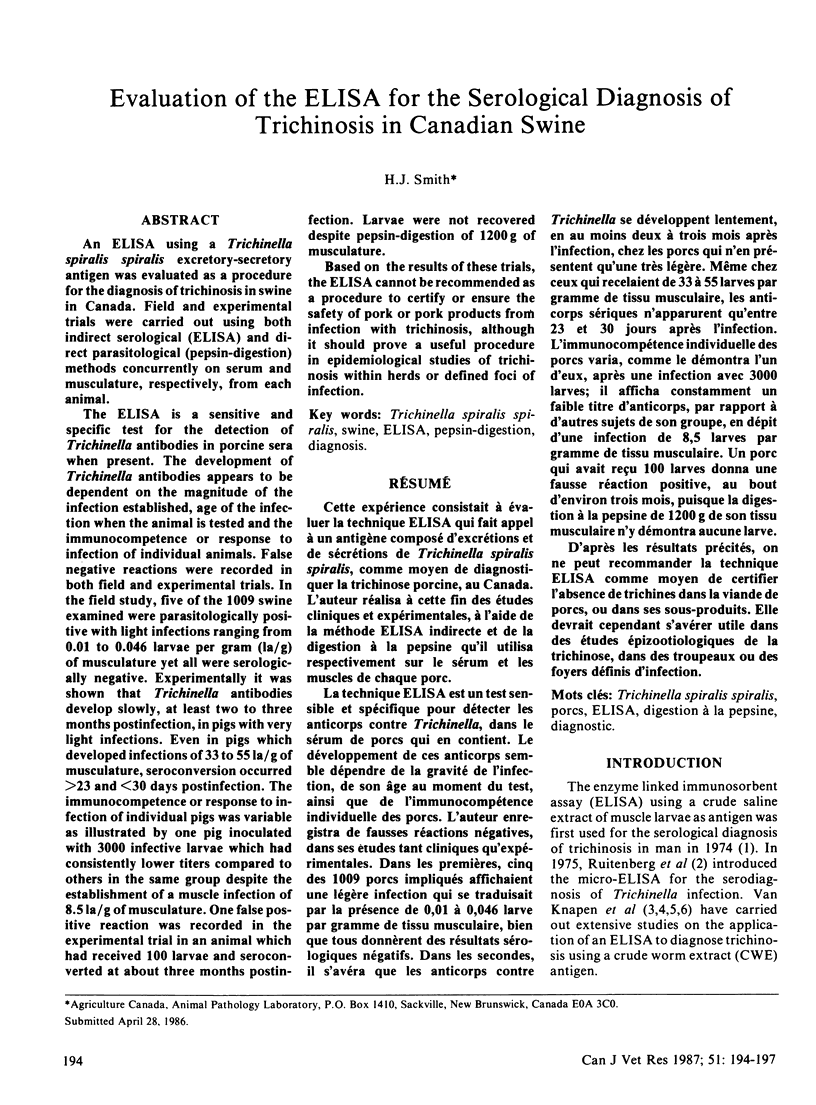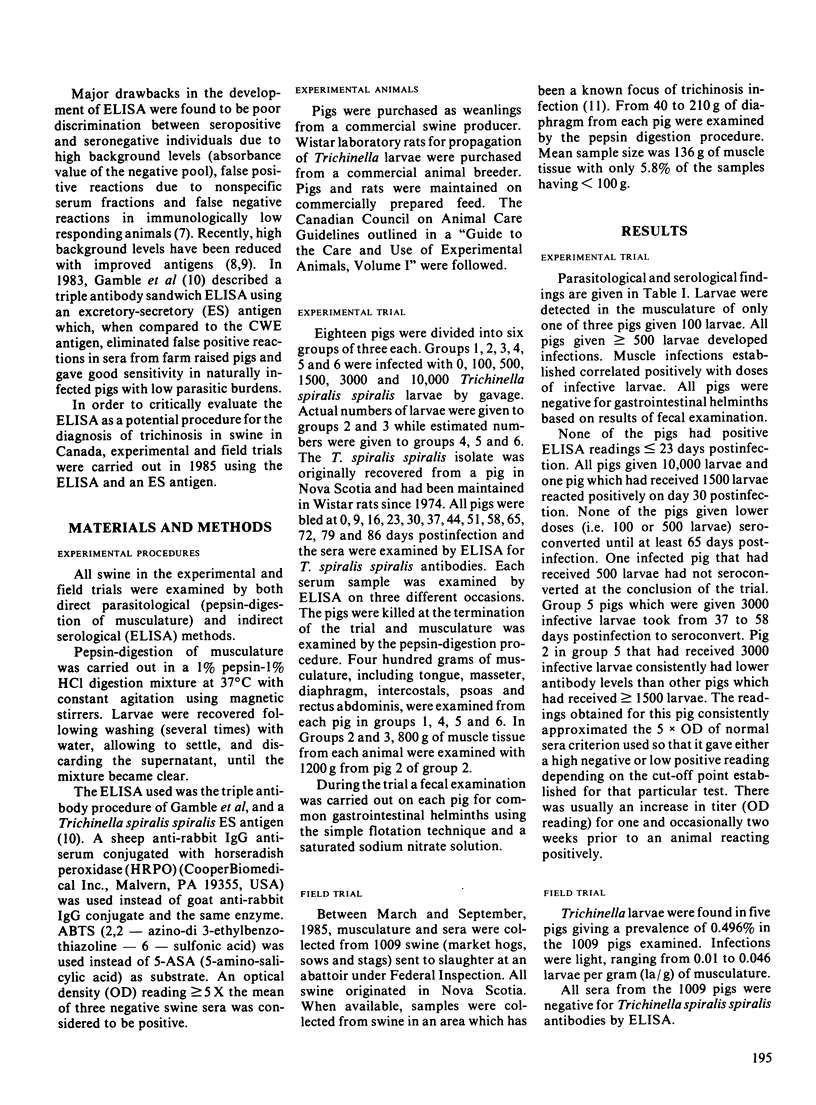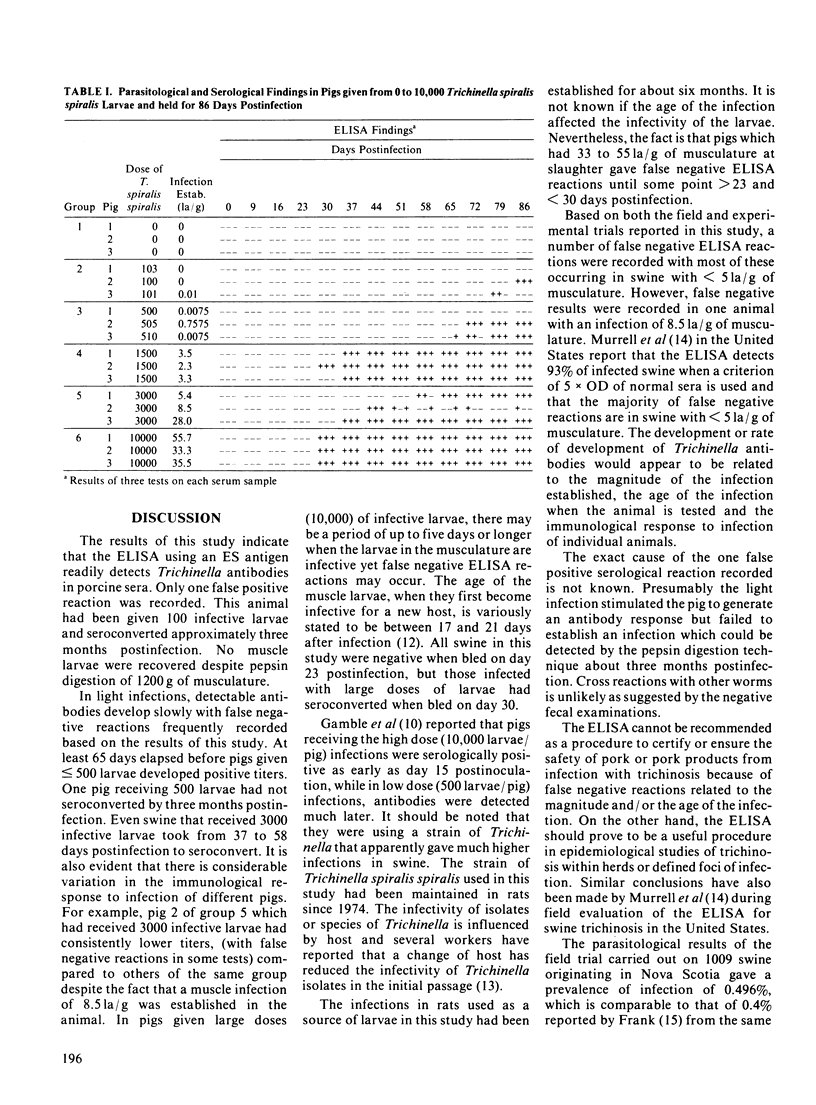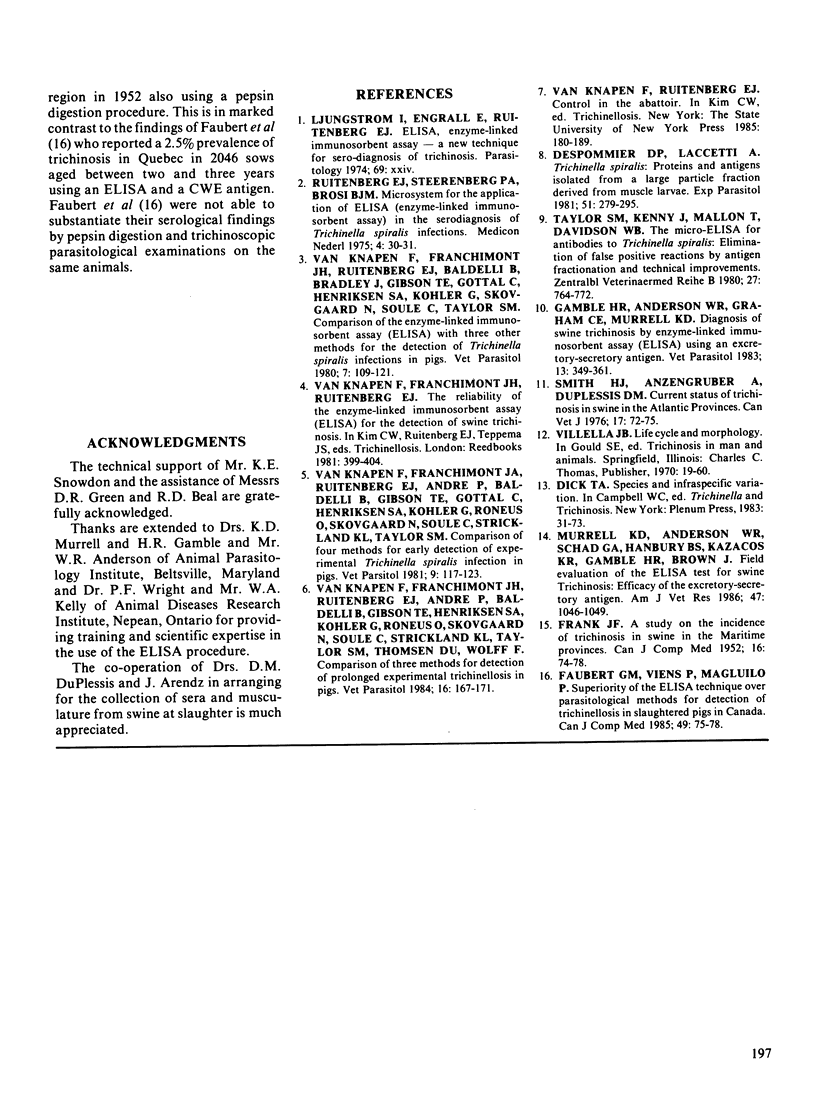Abstract
An ELISA using a Trichinella spiralis spiralis excretory-secretory antigen was evaluated as a procedure for the diagnosis of trichinosis in swine in Canada. Field and experimental trials were carried out using both indirect serological (ELISA) and direct parasitological (pepsin-digestion) methods concurrently on serum and musculature, respectively, from each animal. The ELISA is a sensitive and specific test for the detection of Trichinella antibodies in porcine sera when present. The development of Trichinella antibodies appears to be dependent on the magnitude of the infection established, age of the infection when the animal is tested and the immunocompetence or response to infection of individual animals. False negative reactions were recorded in both field and experimental trials. In the field study, five of the 1009 swine examined were parasitologically positive with light infections ranging from 0.01 to 0.046 larvae per gram (la/g) of musculature yet all were serologically negative. Experimentally it was shown that Trichinella antibodies develop slowly, at least two to three months postinfection, in pigs with very light infections. Even in pigs which developed infections of 33 to 55 la/g of musculature, seroconversion occurred greater than 23 and less than 30 days postinfection. The immunocompetence or response to infection of individual pigs was variable as illustrated by one pig inoculated with 3000 infective larvae which had consistently lower titers compared to others in the same group despite the establishment of a muscle infection of 8.5 la/g of musculature. One false positive reaction was recorded in the experimental trial in an animal which had received 100 larvae and seroconverted at about three months postinfection.(ABSTRACT TRUNCATED AT 250 WORDS)
Full text
PDF



Selected References
These references are in PubMed. This may not be the complete list of references from this article.
- Despommier D. D., Laccetti A. Trichinella spiralis: proteins and antigens isolated from a large-particle fraction derived from the muscle larva. Exp Parasitol. 1981 Apr;51(2):279–295. doi: 10.1016/0014-4894(81)90116-8. [DOI] [PubMed] [Google Scholar]
- Faubert G. M., Viens P., Magluilo P. Superiority of the ELISA technique over parasitological methods for detection of trichinellosis in slaughtered pigs in Canada. Can J Comp Med. 1985 Jan;49(1):75–78. [PMC free article] [PubMed] [Google Scholar]
- Gamble H. R., Anderson W. R., Graham C. E., Murrell K. D. Diagnosis of swine trichinosis by enzyme-linked immunosorbent assay (ELISA) using an excretory--secretory antigen. Vet Parasitol. 1983 Nov;13(4):349–361. doi: 10.1016/0304-4017(83)90051-1. [DOI] [PubMed] [Google Scholar]
- Murrell K. D., Anderson W. R., Schad G. A., Hanbury R. D., Kazacos K. R., Gamble H. R., Brown J. Field evaluation of the enzyme-linked immunosorbent assay for swine trichinosis: efficacy of the excretory-secretory antigen. Am J Vet Res. 1986 May;47(5):1046–1049. [PubMed] [Google Scholar]
- Smith H. J., Anzengruber A., DuPlessis D. M. Current status of trichinosis in swine in the Atlantic provinces. Can Vet J. 1976 Mar;17(3):72–75. [PMC free article] [PubMed] [Google Scholar]
- Taylor S. M., Kenny J., Mallon T., Davidson W. B. The micro-ELISA for antibodies to Trichinella spiralis: elimination of false positive reactions by antigen fractionation and technical improvements. Zentralbl Veterinarmed B. 1980;27(9-10):764–772. doi: 10.1111/j.1439-0450.1980.tb02031.x. [DOI] [PubMed] [Google Scholar]
- Van Knapen F., Franchimont J. H., Ruitenberg E. J., Andre P., Baldelli B., Gibson T. E., Henriksen S. A., Kohler G., Roneus O., Skovgaard N. Comparison of three methods for detection of prolonged experimental trichinellosis in pigs. Vet Parasitol. 1984 Oct;16(1-2):167–171. doi: 10.1016/0304-4017(84)90017-7. [DOI] [PubMed] [Google Scholar]
- van Knapen F., Franchimont J. H., Ruitenberg E. J., André P., Baldelli B., Gibson T. E., Gottal C., Henriksen S. A., Köhler G., Ronéus O. Comparison of four methods for early detection of experimental Trichinella spiralis infections in pigs. Vet Parasitol. 1981 Dec;9(2):117–123. doi: 10.1016/0304-4017(81)90030-3. [DOI] [PubMed] [Google Scholar]


